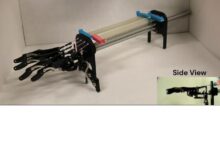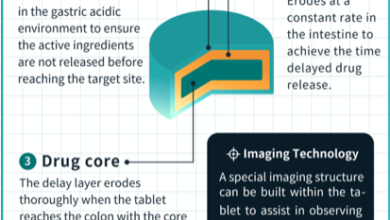
Using a new technique, PESI/MS/MS, to analyze the nutritional content of
[ad_1]
Anthocyanins are compounds related to plant colors. They also have beneficial effects on human health and are used as supplements. Various anthocyanin species, divided according to their molecular shape, are found in plants. Therefore, simple and fast analytical techniques that can differentiate these species in plants are needed for breeding and quality assessment. A team of researchers at Nagoya University in Japan have used a technique called electrospray probe ionization tandem mass spectrometry (PESI/MS/MS) to analyze anthocyanins in plants. The results are published in a journal Horticultural Research.
Anthocyanins are compounds related to plant colors. They also have beneficial effects on human health and are used as supplements. Various anthocyanin species, divided according to their molecular shape, are found in plants. Therefore, simple and fast analytical techniques that can differentiate these species in plants are needed for breeding and quality assessment. A team of researchers at Nagoya University in Japan have used a technique called electrospray probe ionization tandem mass spectrometry (PESI/MS/MS) to analyze anthocyanins in plants. The results are published in a journal Horticultural Research.
Conventionally, liquid chromatography and mass spectrometry are used to analyze anthocyanins. However, conventional procedures require quite a long time and work in the pretreatment and chromatography stages. Therefore, the team led by Associate Professor Katsuhiro Shiratake turned to the PESI/MS/MS technique which had previously been developed by another member of the team, Professor Kei Zaitsu. Prof Zaitsu initially developed a technique to analyze metabolites in living organs, such as the rat brain. However, for the first time, the team is using it for agricultural applications.
PESI/MS/MS analysis is one of the ambient MS approaches, and is much simpler than conventional approaches, because sampling can easily be performed by inserting a probe needle into the sample. The compounds attached to the tip of the probe are then ionized using high voltage electricity and analyzed with PESI/MS/MS. This method can be used to analyze compounds in organisms directly and is also minimally invasive. The group analyzed 16 types of fruits and vegetables and managed to detect 81 types of anthocyanins in just 3 minutes. They also found that their technique could detect anthocyanins in small areas of plants, such as achenes, the tiny seeds found in the skin of strawberries.
“This study suggests the application of PESI/MS/MS for the analysis of not only anthocyanins but also other plant metabolites,” said Shiratake. Plant metabolites contribute to the quality of plants and their processed products, including their taste, aroma, color and functionality. By applying PESI/MS/MS to analyze plant and food metabolites, which are usually laborious and time-consuming steps, we can dramatically simplify and speed up the analysis.”
In the future, the team hopes to combine one of Prof. Another Zaitsu, called PiTMaP, which combines PESI/MS/MS with bioinformatics. They hoped that this platform would allow them to analyze the metabolites targeted by PESI/MS/MS and analyze the data using multivariate analysis and multiple comparisons in a short period of time. It is hoped that the application of this platform to plants and food will accelerate the analysis of compounds and metabolites that are important for plants and food.
Journal
Horticultural Research
Article title
High throughput analysis of anthocyanins in horticultural crops using electrospray probe ionization tandem mass spectrometry (PESI/MS/MS)
Article Publication Date
28-Feb-2023
[ad_2]
Source link






